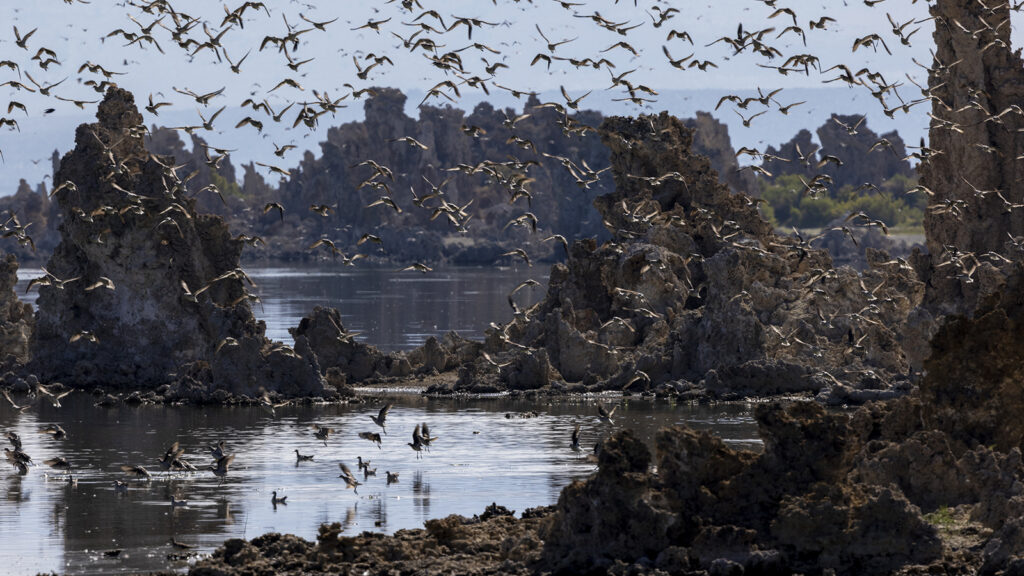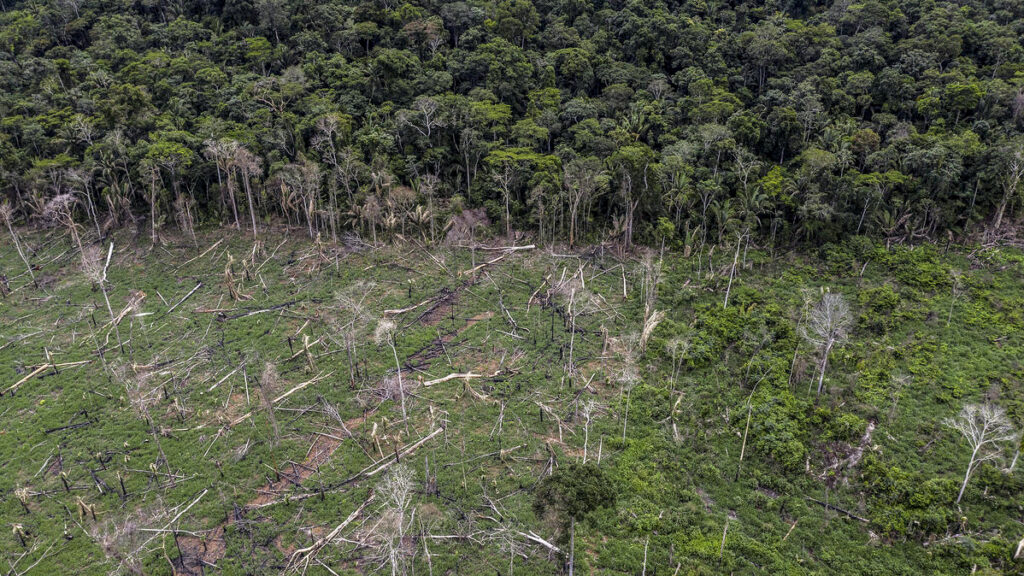6 Ways to Jumpstart a Green Recovery From COVID-19

A shared garden on top of an apartment complex. Urban and community farming has grown in popularity to address food and nutritional needs due to the supply chain disruptions caused by COVID-19 lockdowns.
Photo: Unsplash
In the popular imagination, the coronavirus disease (COVID-19) pandemic has been a boon for the natural world. With more than a third of the global population under some level of lockdown, we’ve delighted to see skies burst back into blueness and wild animals venturing into urban neighborhoods. It’s been easy to convince ourselves that wildlife and the environment have flourished. The truth, however, isn’t so reassuring. The pandemic has created an increase in poaching, animal trafficking, illegal fishing and other environmental crimes. It has caused a surge in food, plastic and infectious medical waste. And it’s put a roadblock in front of a much-needed international agreement on key biodiversity and climate goals.
With countries across Asia and the Pacific gradually loosening their quarantines, we must bring the focus back to nature and address the pandemic through green and inclusive recovery. For many, this will be a challenge because of the high demand for health care and social protection. But the choice between the environment, on the one hand, and the economy on the other is a false one. Experts have found that green investments generate significant job opportunities and sustainable benefits to economies. Early investment is also ultimately cheaper than the trillions of dollars needed to respond to future crises. As we begin to emerge from months of lockdown, here are six measures that decision-makers can take to jump-start their own green recoveries.
Improve Air Quality and Hygiene
Recent air quality improvement and reduced carbon emission from lockdowns can be sustained by continuing flexible working arrangements and enabling the use of non-motorized transport. Cities such as Bogotá, Colombia, and Sydney, Australia, are creating designated lanes and pathways for walking and biking to reduce crowding on public transport and provide a safe and healthy way to exercise. Governments can further improve air quality through policy reforms, incentives and investments in sustainable transport, clean energy and green urban planning.
Across Asia and the Pacific, millions of people lack access to basic drinking water or sanitation services, making it challenging to follow handwashing and other hygiene guidelines to prevent the spread of COVID-19. Emergency water provision, handwashing facilities and temporary latrines can be provided to communities and waste-sector workers, coupled with campaigns that teach and encourage proper handwashing. Disposal of medical waste must follow proper guidelines to minimize pollution and the spread of disease. In the medium term, investments to improve water supply, sanitation and solid waste management (including the 3Rs of “reduce, reuse, recycle”) should be substantially increased to protect human health and the natural environment.
Protect Wildlife and Restore Ecosystems
Protecting the region’s natural capital and developing sustainable land-use practices are crucial to reducing future outbreaks of zoonotic diseases. This will require increased enforcement of regulations against poaching, wildlife trafficking and habitat destruction. Governments can use stimulus funds to hire additional wildlife rangers and increase the use of remote monitoring technologies such as camera traps and drones in compliance with physical distancing requirements and travel restrictions. To curb wildlife trade, there is growing public support in Asian countries to close illegal and unregulated wildlife markets. Provinces in the People’s Republic of China have developed compensation schemes for farmers to transition from breeding exotic animals for trade to rearing other livestock or producing tea and herbal medicines. To restore ecosystems, governments can create cash-for-work programs for environmental public works, such as river restoration, and pest control to benefit native wildlife.
Urban and community farming has grown in popularity to address food and nutritional needs and can generate jobs at a rate of one for every 50 to 100 citizens.
Support Urban Agriculture to Improve Food Security
Urban and community farming has grown in popularity to address food and nutritional needs due to the supply chain disruptions caused by COVID-19 lockdowns. Fruits and vegetables grown in just 10% of a city’s gardens and green spaces can provide 15% of the local population with their basic needs. Investing in urban agriculture and related services can generate jobs at a rate of one for every 50 to 100 citizens. It also saves energy and reduces emissions from storage and transportation and can reduce retail prices for consumers. Urban gardens can also provide environmental benefits. Governments may consider supporting resilient and localized food supply chains to ensure continued production and distribution of safe, diversified and nutritious food while protecting livelihoods, the environment and health. Such support should include improving access to high-speed internet services to expand agricultural e-commerce.
Some of these ideas are already happening. In the wake of the pandemic, Singapore has initiated a grant program for local farmers and entrepreneurs as part of a plan to meet 30% of its nutritional needs with locally grown food by 2030. In the Philippines, government agencies are providing urban residents with seeds, planting materials and training to create urban vegetable gardens. Governments can also encourage agroecology and agroforestry farming approaches, as well as integrated pest management, to help restore soil and forests, strengthen food security and climate resilience and protect livelihoods.
Invest in Green Livelihoods
This is a key way countries can address unemployment and rebuild economies. Green business sectors can provide resilient livelihood opportunities while improvements in digital infrastructure can support remote working, telehealth and e-commerce. To address unemployment resulting from the crisis, economists have recommended education and training for green jobs. Livelihood programs can support restoring and enhancing natural capital, such as Pakistan’s 10 Billion Tree Tsunami program or rehabilitating green urban spaces and nature-based tourism destinations.
Micro-, small- and medium-sized enterprises, which employ the most people in Asia and the Pacific, will need financial and technical assistance to adopt green technologies and transition to green business models, products and services. Support for larger companies can be linked with actions to improve their environmental performance, which can include information disclosure and greening their supply chains. Sustainable solutions to adapt industries to the new normal, such as developing and monetizing virtual tourism experiences, should also be promoted.
Build Climate and Disaster Resilience
The Global Commission on Adaptation has estimated that investing $1.8 trillion globally from 2020 to 2030 in resilience-building measures could generate $7.1 trillion in total new benefits. Therefore, stimulus support for large infrastructure investments should ensure that projects are designed and planned to be ecologically sensitive, low-carbon and resilient to climate and disaster impacts. Nature-based solutions — such as protecting coral reefs or restoring mangrove forests to act as natural buffers against storm surges — are cost-effective and have major co-benefits for biodiversity, ecosystems, food supply and local economic opportunities (like tourism), and also provide aesthetic and cultural benefits to communities. Farmers can implement climate-resilient farming tactics that preserve open areas to absorb increasing volumes of rain during the monsoon season.
Innovative Financing That Supports Green Investments
Innovative financing mechanisms will be needed to meet the large investment needs of a transformative green recovery. Environment, social and governance investments have performed better than the broader market in the early months of the pandemic and may be key to integrating support for environmental sustainability into stimulus packages. Financial institutions can issue green and blue bonds to raise capital and invest in programs, projects and jobs to provide growth while delivering environmental benefits. The Export-Import Bank of Korea’s green recovery initiative is a good example. Countries can also use or reform economic instruments such as taxes, levies, penalties and subsidies for collecting domestic revenues and providing incentives for stimulating sustainable and low-carbon investments to achieve a green recovery and longer-term, climate-resilient development.
A version of this article was originally published by Asian Development Bank.









